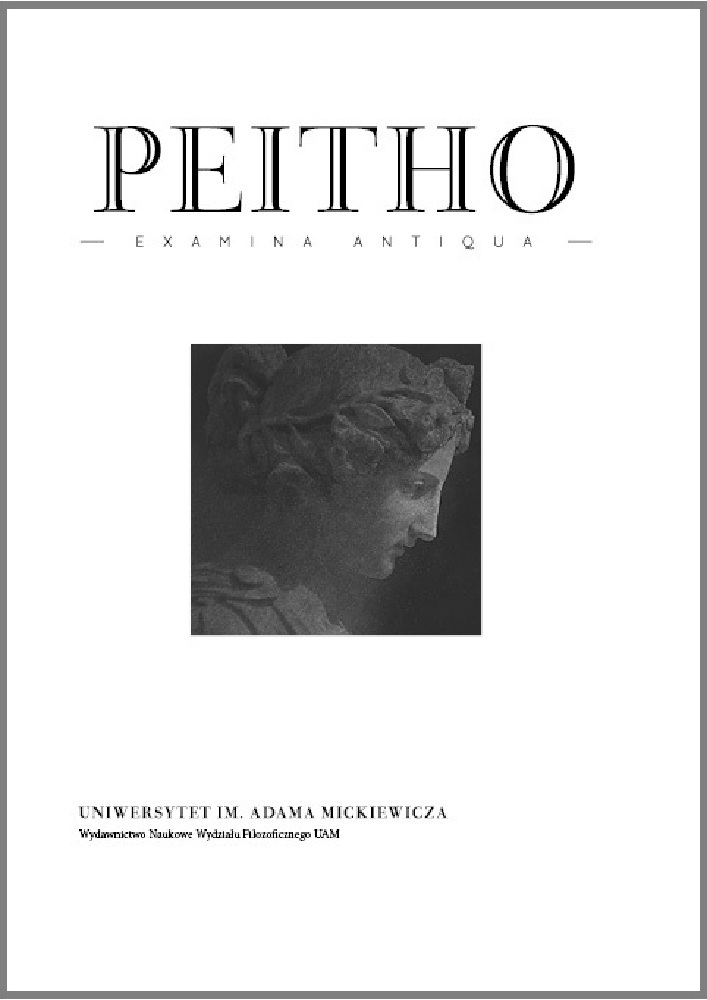Abstract
The first book of the Aristotelian Physics may be considered as a sort of general introduction to the whole work. In particular, chapters 2 and 3 result very interesting for the foundation of the science of nature according to Aristotle; indeed, in these two chapters, the Stagirite criticizes the position of the Eleates Parmenides and Melissus. These two philosophers are considered as those who claim that change does not exist because the existence of the not-being is impossible to suppose. For this reason, since the Eleates deny that motion and change really exist, the refutation of their thesis results essential for the logical and ontological foundation of the Aristotelian science of nature. This paper wants to make light on the argumentations that Aristotle uses against Parmenides and Melissus. Indeed, since the Stagirite makes often use of his philosophical categories (like substance; the categories, the continuum and so on), it seems that his critics sound a little bit anachronistic. In many passages of the text is seems that Aristotle “simply” replace the presupposition of the Eleatic philosophy (i.e. the being is and not-being does not) with the thesis of the evidence of moving and plurality, in general. The aim of this contribution is to reflect on the critics present in Ph. I 2–3 in order to underline the importance of the Eleatic philosophy for the Aristotelian science of nature.
References
Aristotele, 1936, Aristotle’s Physics, ed. W.D. Ross, Oxford.
Aristotele, 1996, Fisica, libri 1–2, ed. F.F. Repellini, Milano.
Aristotele, 2007, Fisica, ed. L. Ruggiu, Milano.
Aristotele, 2011, Fisica, ed. R. Radice, Milano.
Eleati, 2011, Parmenide, Zenone, Melisso, ed. G. Reale, M. Untersteiner, Milano.
I Presocratici, 1991, Testimonianze e frammenti, ed. A. Lami, Milano.
Parmenide, 2010, Poema sulla Natura, ed. L. Ruggiu, Milano.
Abbate, M., 2010, Parmenide e i neoplatonici, Alessandria.
Berti, E., 1990, “L’uno e i molti nella Metafisica di Aristotele”, in: V. Melchiorre (cur.), L’uno e i molti, Milano, pp. 155–180.
Berti, E., 2005, Nuovi studi aristotelici vol. II: fisica, antropologia, metafisica, Brescia.
Berti, E., 2012, “Verità e necessità in Parmenide, fr. 2 DK”, in: L. Ruggiu, C. Natali, S. Maso (cur.), Ontologia, scienza, mito. Per una nuova lettura di Parmenide, Milano, pp. 105–115.
Cherniss, H., 1935, Aristotle’s Criticism of Presocratic Philosophy, Baltimore.
Düring, I., 1990, Aristotele, trad. It. P. Donini, Milano.
Giardina, G.R., 2002, I fondamenti della fisica, Catania.
Jaeger, W., 1961, La teologia dei primi pensatori greci, tr. it. E. Pocar, Firenze.
Pazzelli, F., 2011, “Il confronto di Aristotele con l’eleatismo in Phy. I 2–3”, Syzetesis, pp. 1–21.
Popper, K.R., 1998, The World of Parmenides, London–New York.
Pulpito, M., 2005, Parmenide e la negazione del tempo, Milano.
Ruggiu, L., 2007, “La Fisica come ontologia del divenire”, in: Aristotele, Fisica, L. Ruggiu (ed.), Milano, pp. 13–64.
Wieland, W., 1993, La Fisica di Aristotele, tr. ital. C. Gentili, Bologna.
License
Peitho provides immediate open access to its content on the principle that making research freely available to the public supports a greater global exchange of knowledge.
